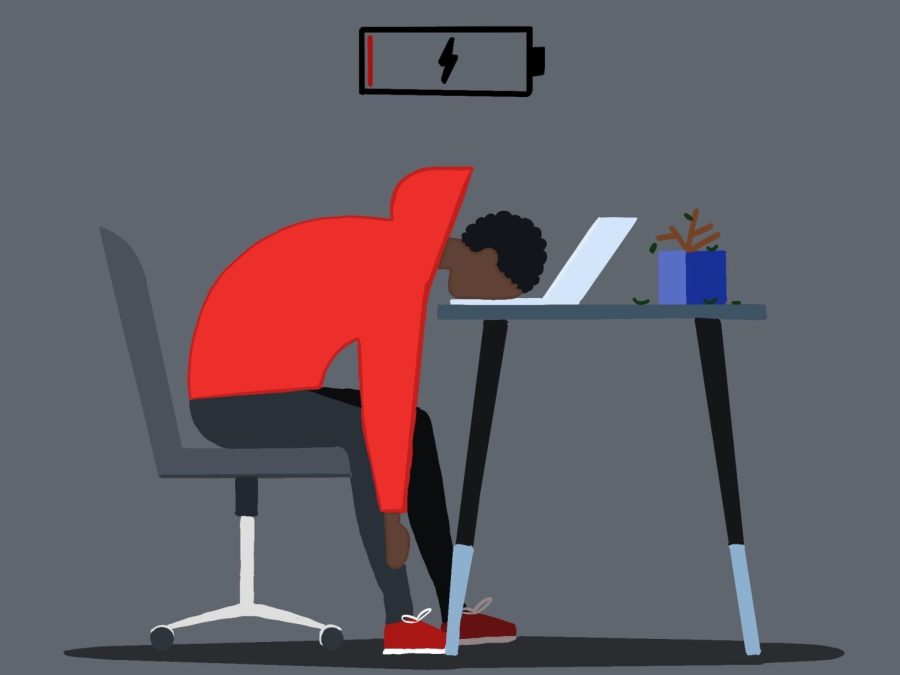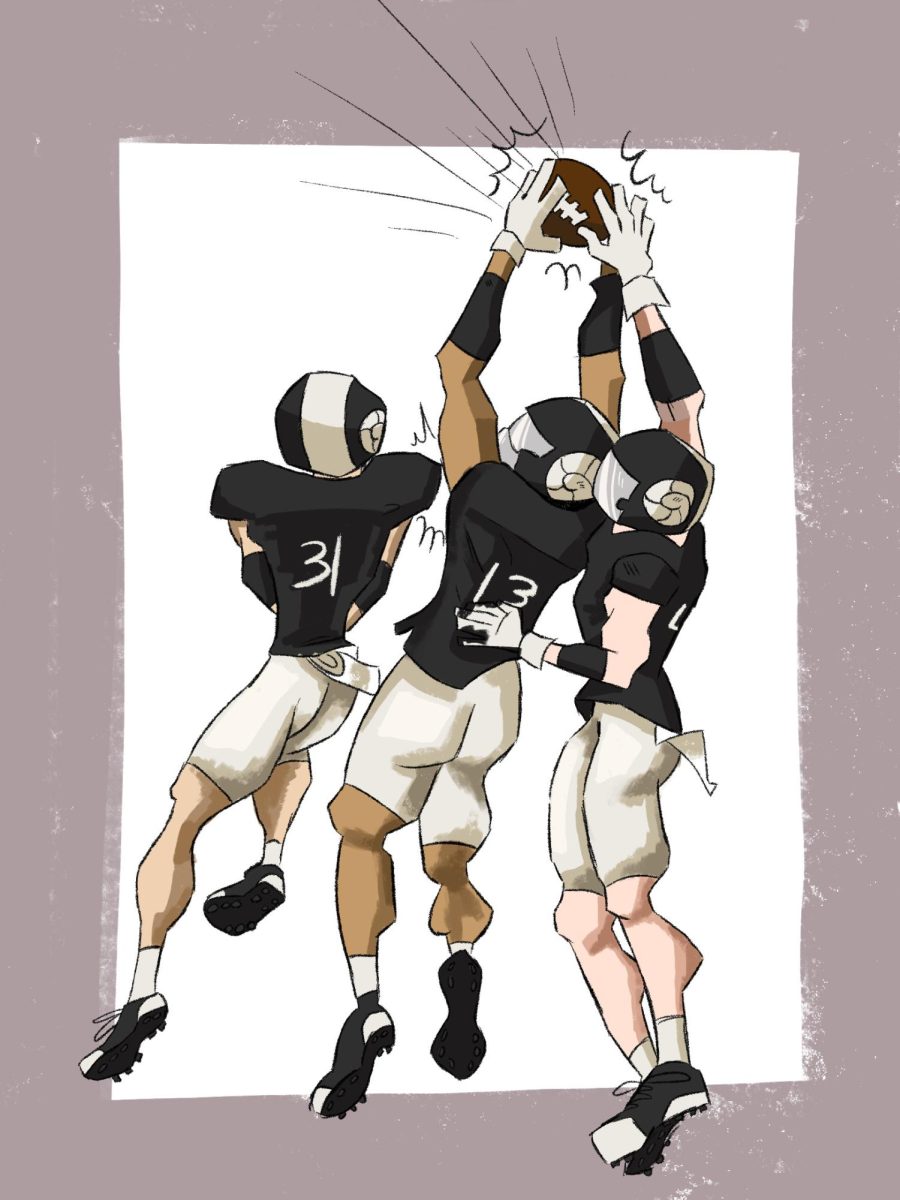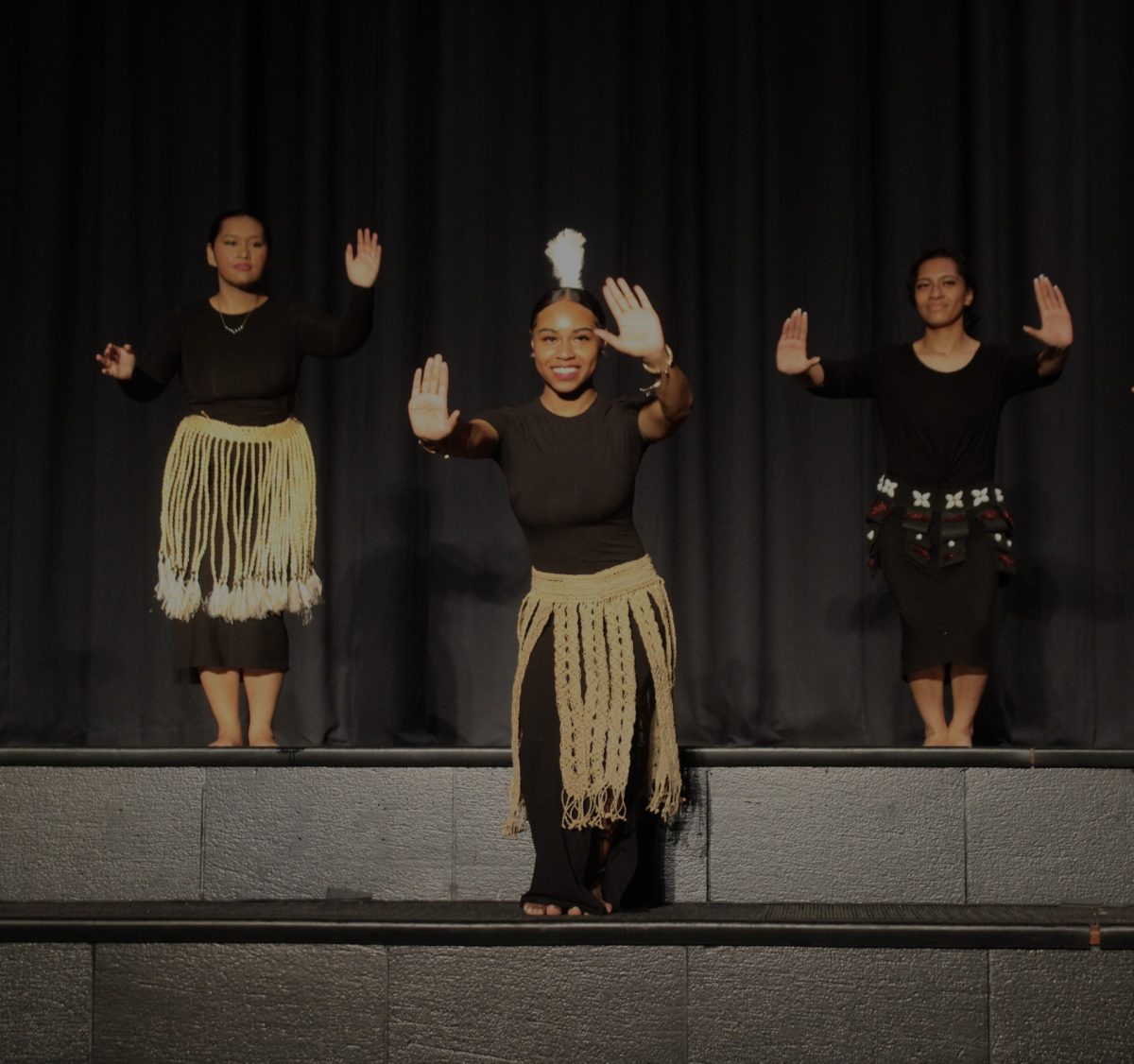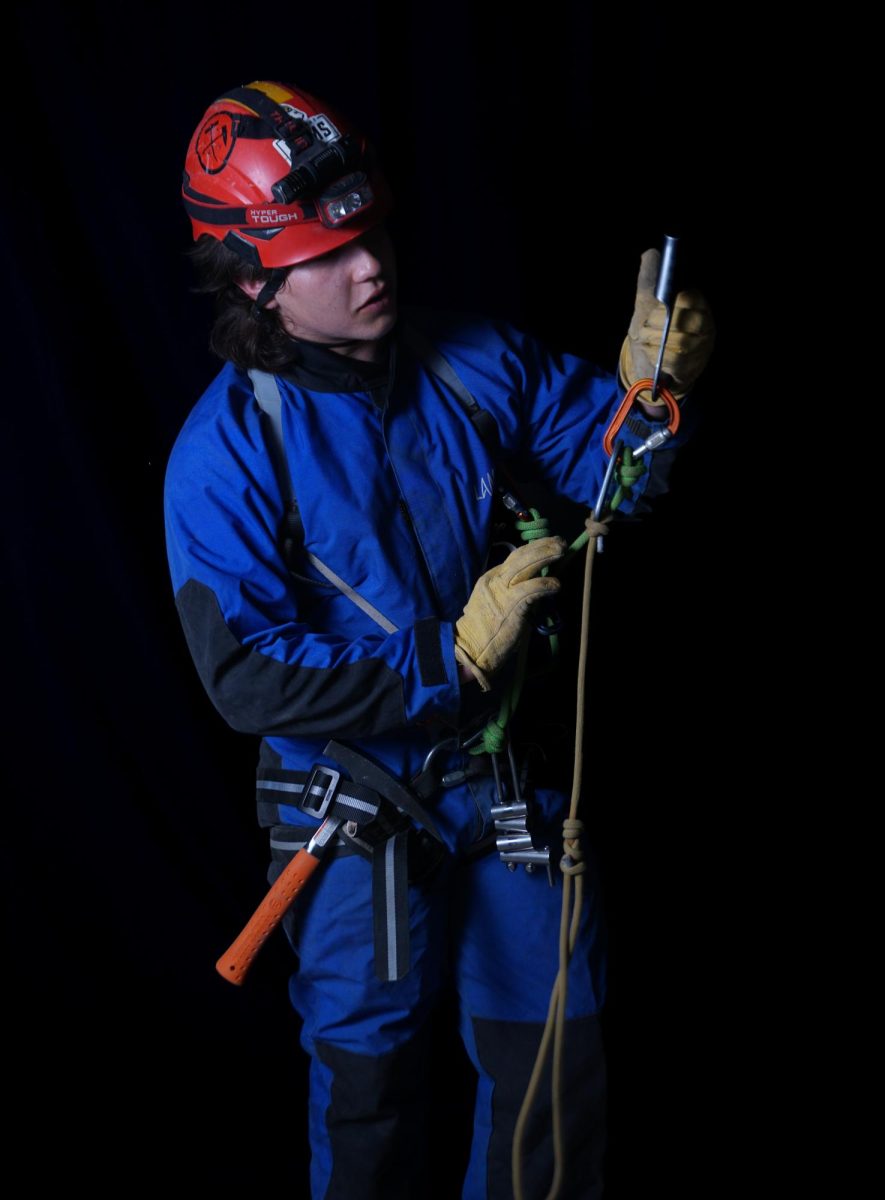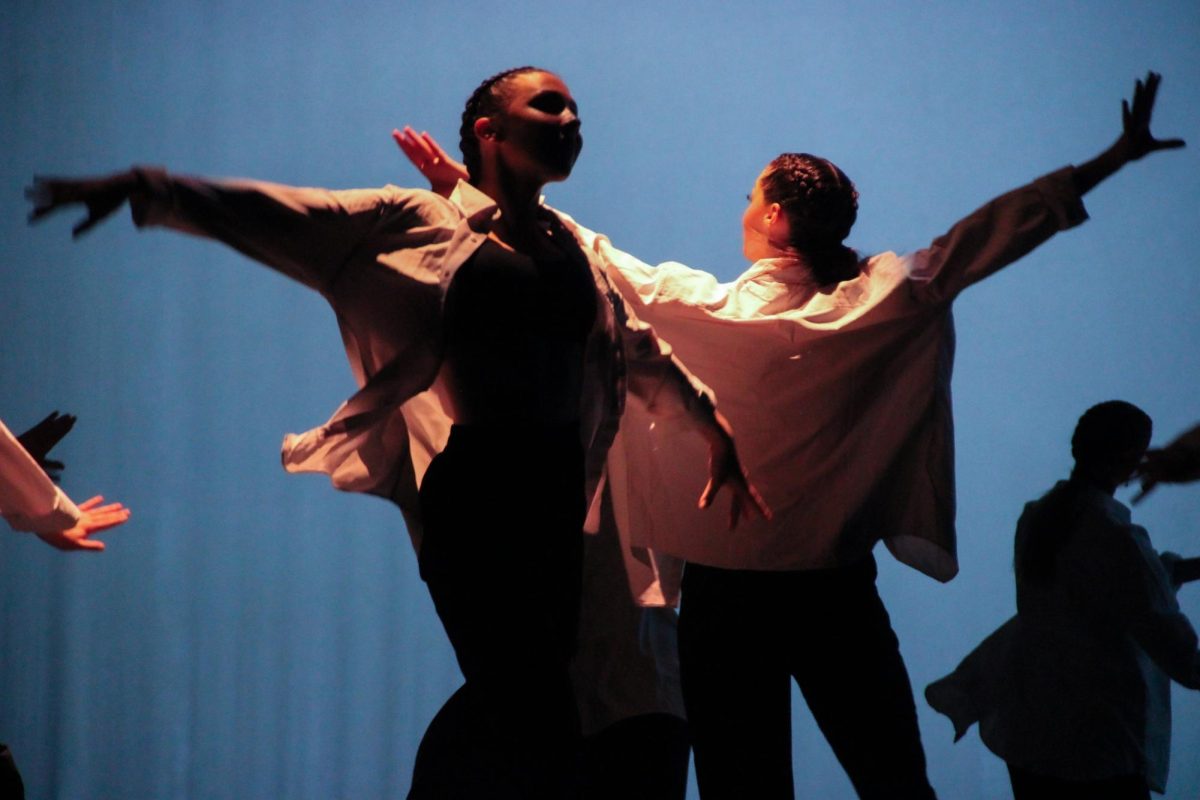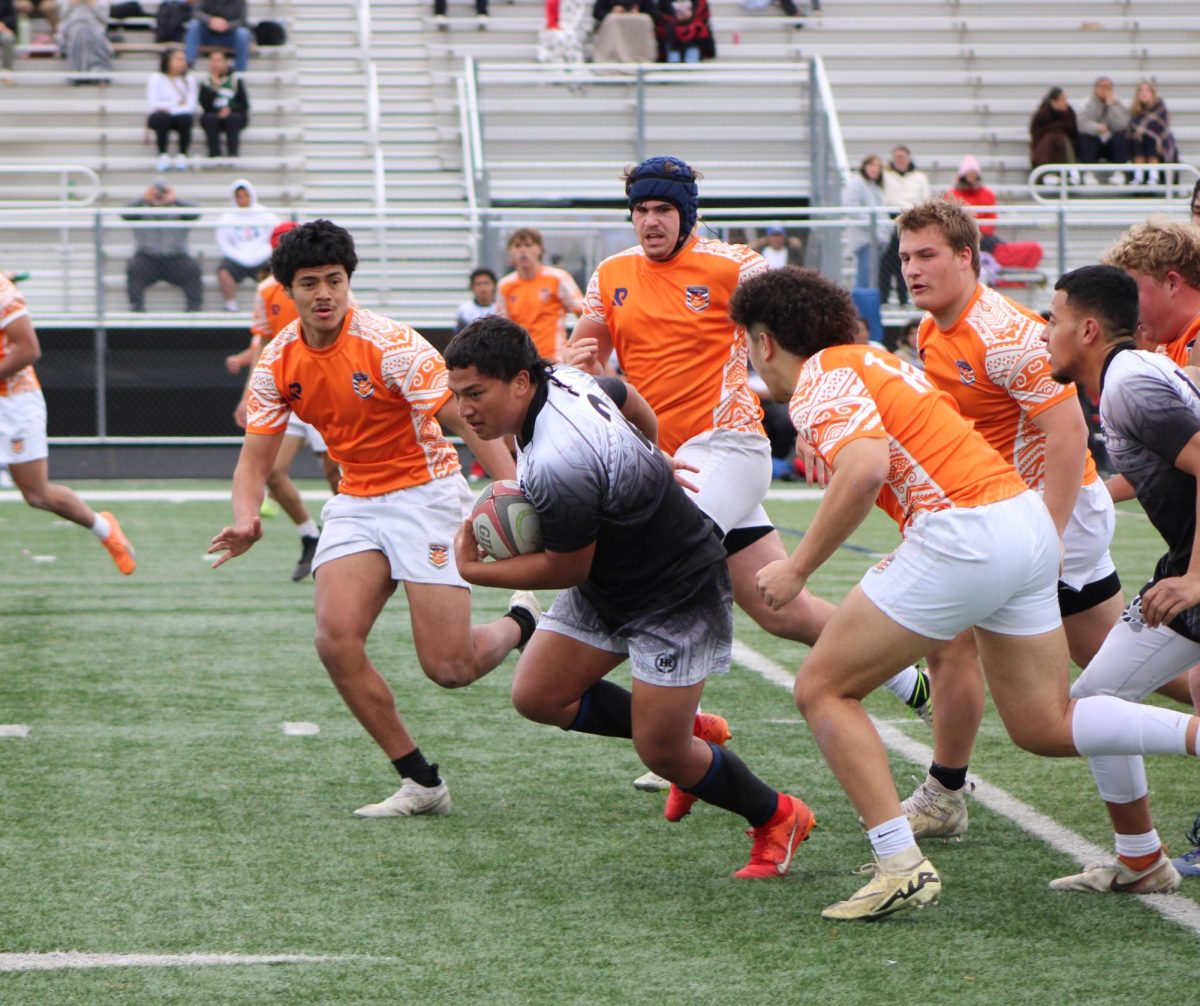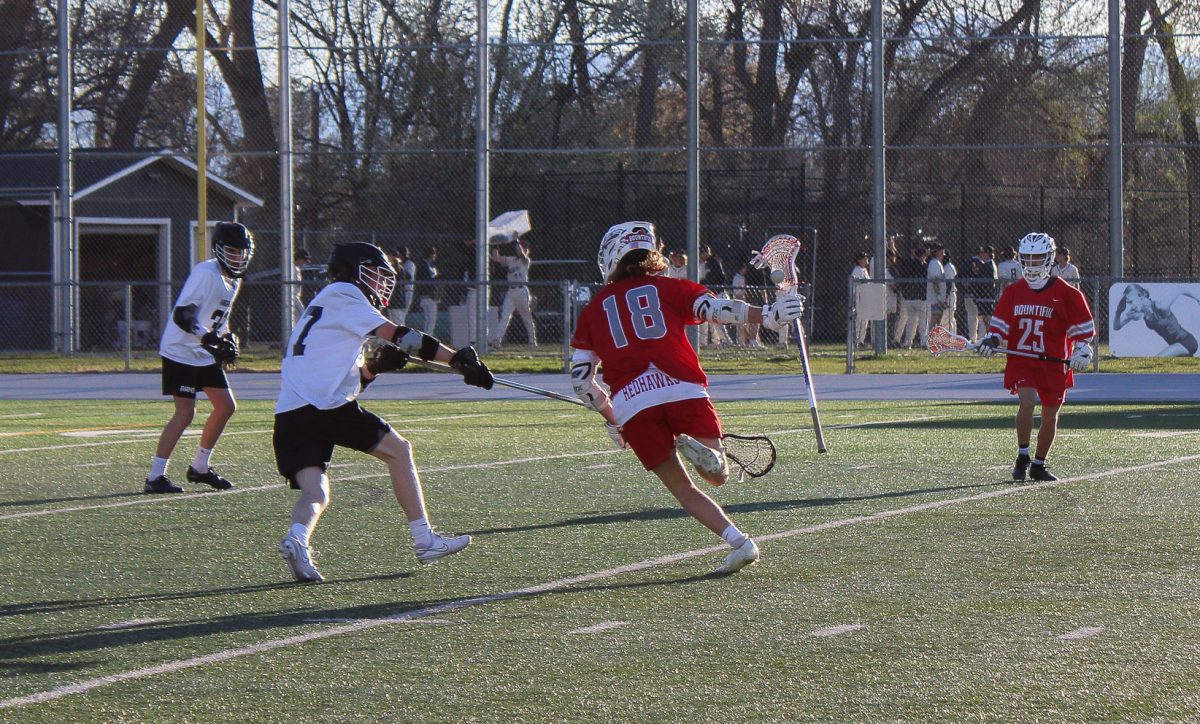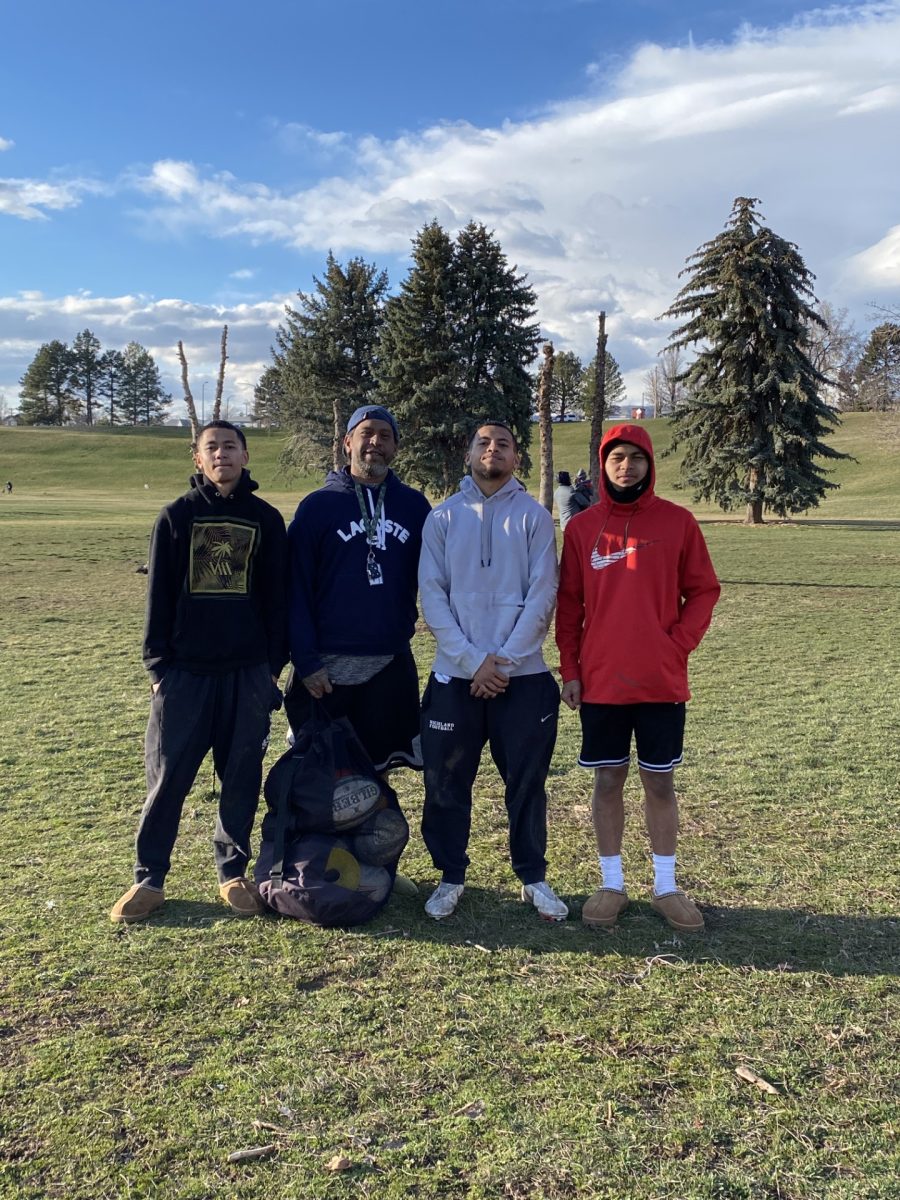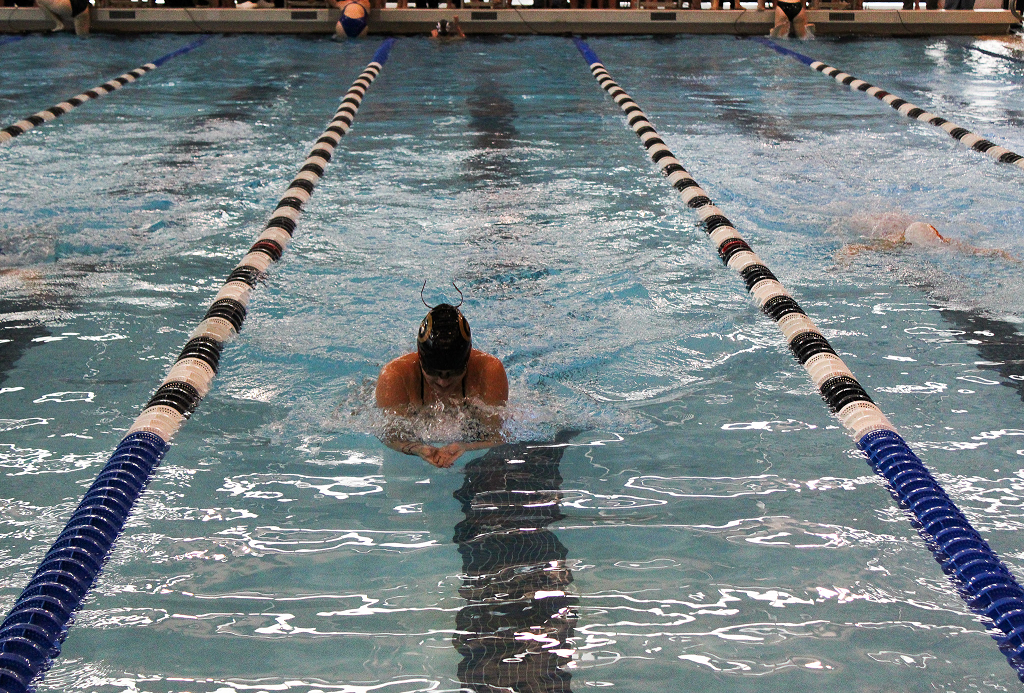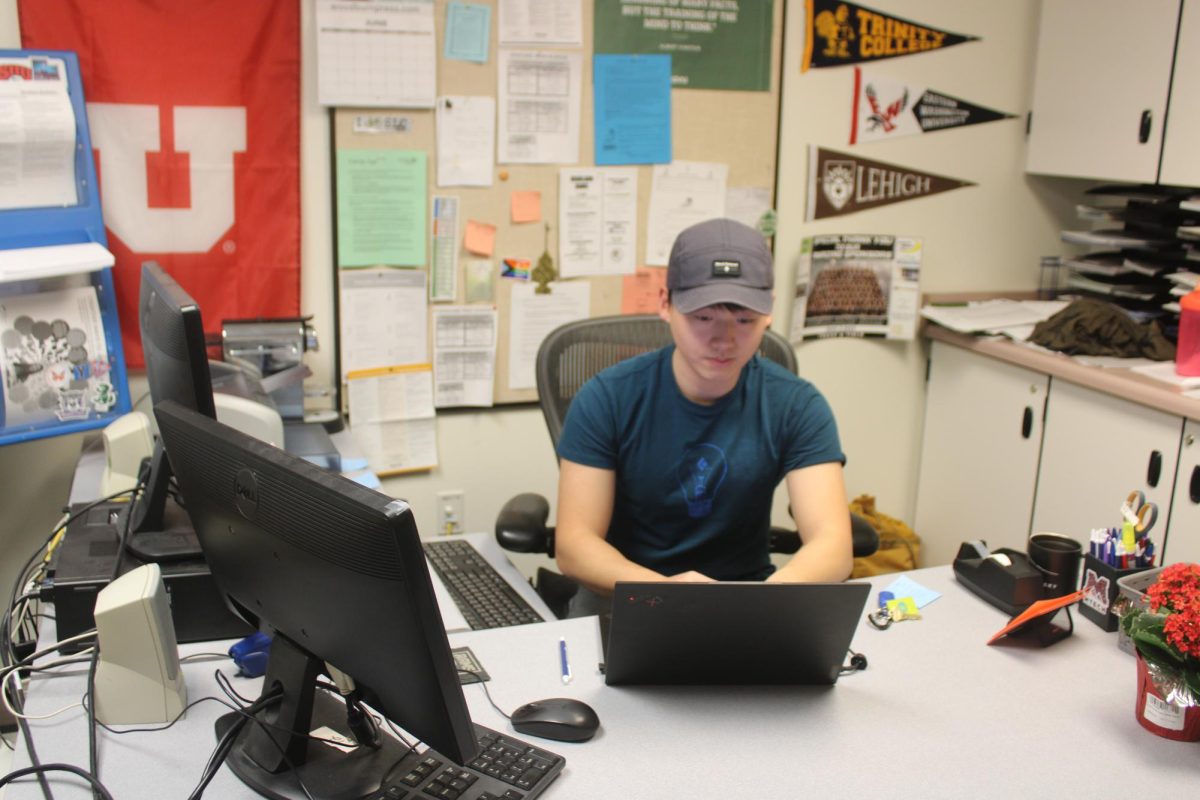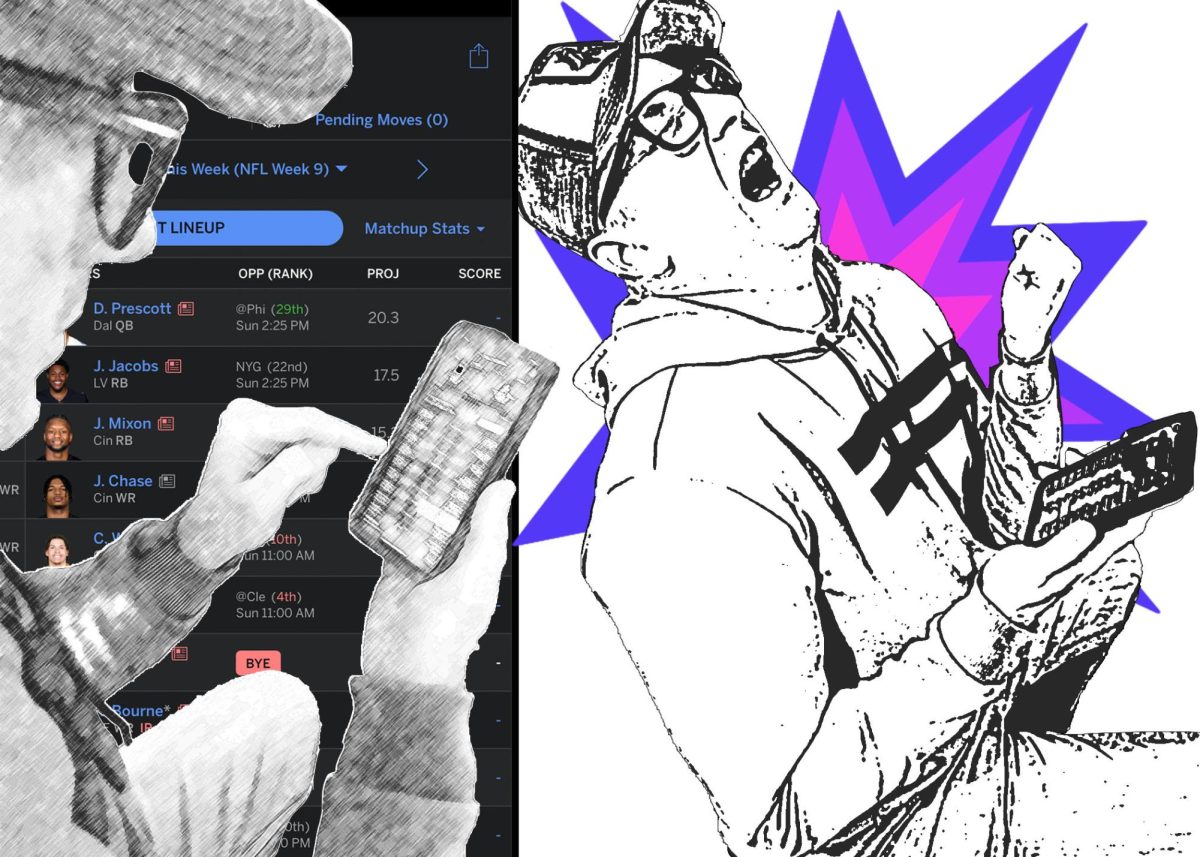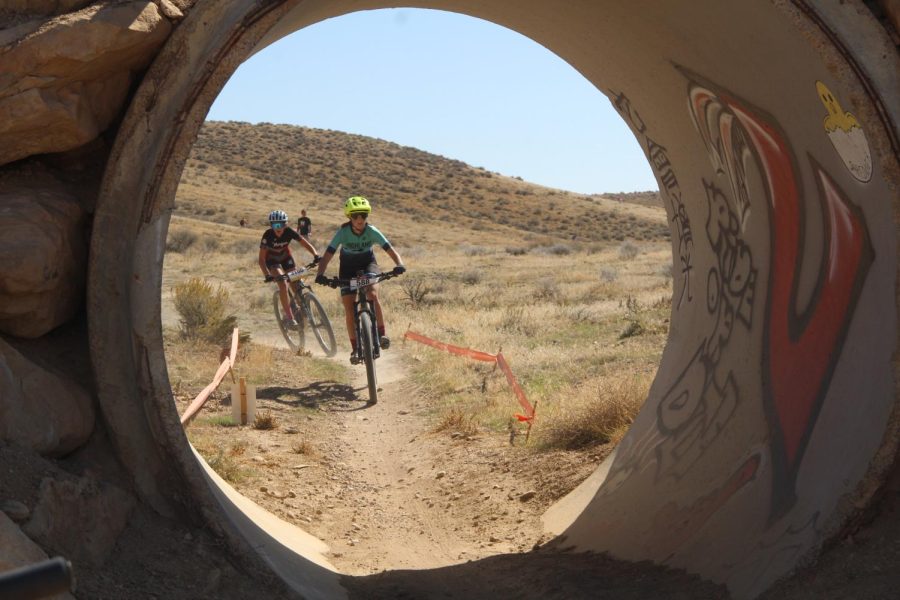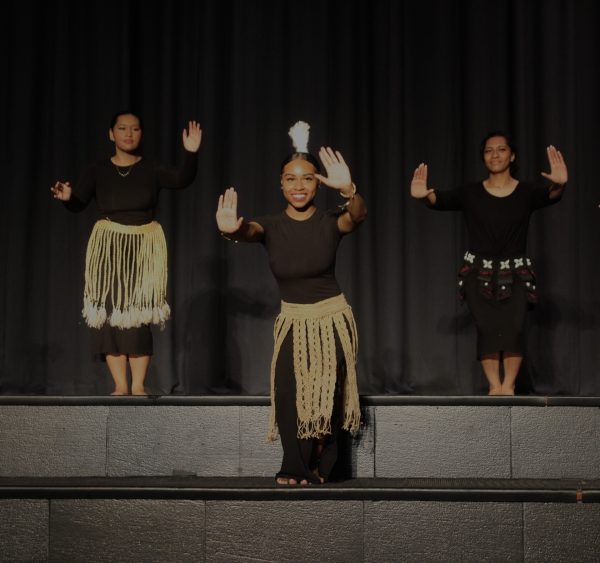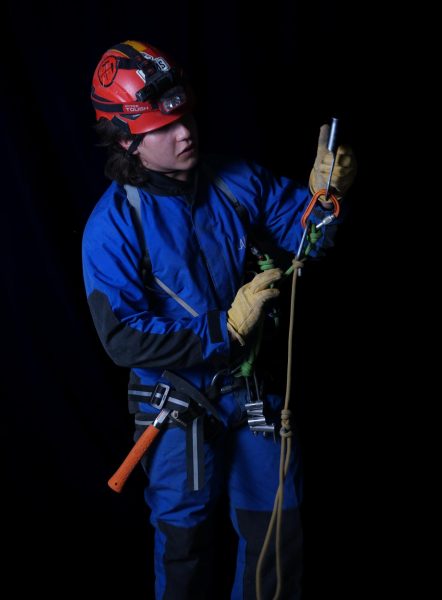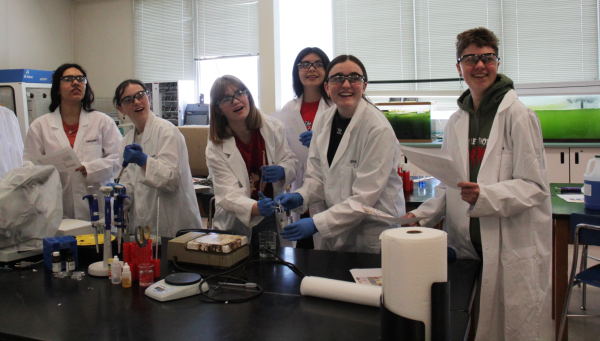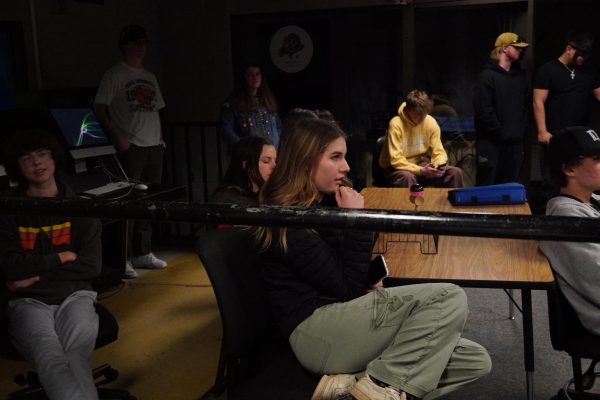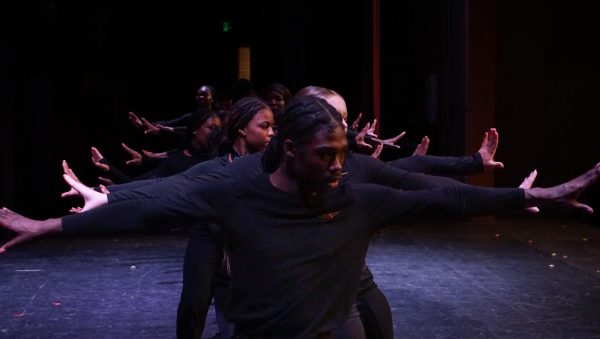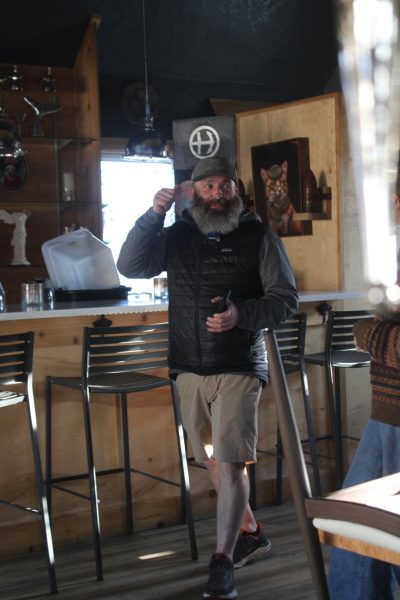Peak Performers
Highland Mountain Biking Team Experiences Thrills and Spills
November 21, 2022
Dozens of colorful jerseys from schools all across the state line the barrier of the start chute. Riders are ready in their call-up positions. A focused anticipation laces the air. Suddenly, the timekeeper starts the countdown from 10, everyone gets into ready position, and the nervous chatter dies down.
It’s go time, and everybody knows it.
The horn blows and the riders sprint off, a cluster competing for a good spot before the single track sets in.
The intensity surrounding the early moments of a mountain bike race is palpable, as riders know a fast start is key but also are aware that the tight quarters of a start gate are where crashes are almost inevitable.
Spectators cheer on their teammates and friends from outside the gates while riders race through the course as fast as they can, vying for a spot on the podium. Outside of the race, team tents and trailers fill the parking lot to a brim, and the chaotic hustle of bikers getting ready for their own races buzzes through the air.
Utah is home to the largest high school level league in the nation. With more than 7,000 riders competing in different regions, the sport has a major presence throughout the state and biking community.
Highland specifically hosts around 40 riders from all different grade levels, some even in middle school training for their freshman year. Despite this far reach throughout the school and community, many students at Highland don’t even know that the mountain biking team exists.
“I feel like the school doesn’t really know about the team because even though mountain biking is a massive sport it’s not a common one,” Highland varsity rider Amelia Sogard said. “You can’t mountain bike everywhere and I feel like that’s one of the things that individualizes it from other sports and makes it special to Utah.”
Mountain bike racing requires a large amount of mental and physical strength, which oftentimes leads people to outweigh the reward of mountain biking to its risks. Rocky terrain and long-distance courses can be dangerous and stressful for many, but for others, it’s what they love and seek out.
“The dangerous aspect is definitely a big part in why a lot of people don’t do it [mountain bike],” Sogard said, fresh off a crash of her own. “I feel like people are always afraid they’re going to crash or get hurt and to some degree that is a big concern but to another it’s not because after all of the training you do and because you spend so much time on your bike you learn to handle it.”
One thing that riders can count on in mountain biking is difficult terrain. From slickrock to gravel and mud to sand, these riders face it all. Crashing is an expectation for them, not a concern because they know how technical the courses they ride are. The combination of the close quarters of a single-track course and jagged rocks or quicksand like mud keep athletes on their toes and expecting a thrill of a ride. These intense conditions were even sported this year at the state competition located in Saint George, a race that included 40 mile an hour winds, sandstorms, and dozens of crashes.
“It can be scary for sure, but I think the reason I keep coming back to it [mountain bike racing] is because even though its painful and its hard and its dangerous, it’s worth it because of the feeling you get while you’re riding and when you’re done with your race,” JV team captain Abby Van Blarcom said.
Adrenaline and the thrill that accompanies racing isn’t the only thing that keeps people engaged with biking. Despite the sport being based in intense individual competition, the social and comradery aspects of the biking community are a major part of being a part of the team. During races, the team cheers on all of its riders, no matter the racing level, and showcases the next level of teamwork when riders race against their own teammates and are still cheering them on.
“I feel like what makes it feel like a team is that you are always cheering your friends on and you’re always going to support them even if they had a bad race or didn’t feel the best. You aren’t ever just racing alone, you’ll always have your team behind you,” Sogard said.
Even though mountain biking isn’t a typically conventional sport for a high schooler, the nature of the sport allows it to fit right in with the culture of Utah. Immediate access to the mountains and terrain allows the bike team to train on all different types of courses and complete workouts specific to racecourses throughout the state. This season, the mountain bike team has been all over the state to race in courses in Price, Snow Basin, Moab, Vernal, and St. George, and has trained all throughout the valley in preparation for these races.
“We kind of do go everywhere,” Sogard said. “We practice at different places each week and for races we get to go all over the state.”
This versatility in training locations not only allows riders to develop the skills necessary to become better at biking, but also allows the team to see different parts of the state alongside teammates, family, and friends. Even though mountain bike racing does merit some caution over the risks it maintains, ask any athlete and they’ll say it’s completely worth it.
“Racing pretty much the best feeling ever,” Van Blarcom said. “It’s just this feeling of going through so much pain for an hour until you reach the finish line and everyone’s cheering for you and then you’re finally done and you know you raced a good race.”
From start chute to finish line, the atmosphere of individual competition is what this sport is known for, but the team at Highland is just one example of the unexpected community that comes along with it.
Zipping down the track while sprinting to the finish line side by side with other racers is only one aspect of what it means to be a mountain bike racer. The other includes racers oftentimes finding themselves as more of a teammate than individual rider, a surprising idea for people who don’t know much about the sport, but a welcomed reality for athletes who have made this team an entire racing community.
